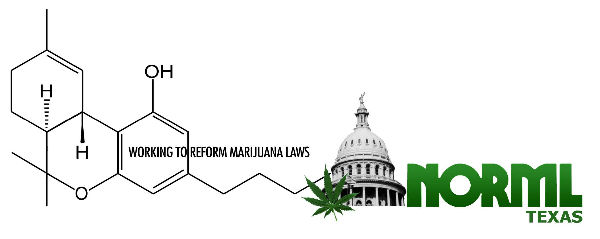Meeting Notes July 3rd, 2013
July 10, 2013Changing laws in Texas
July 28, 2013
- Marijuana is a safer substance than any other drug, legal or not. There has never been a death recorded from marijuana overdose, and the DEA’s own Administrative Law Judge, Francis Young, called it “one of the safest therapeutically active substances known to man.”
- Marijuana is less addictive than heroin, cocaine, alcohol, nicotine, and caffeine, according to the National Institute on Drug Abuse.
- Marijuana is not a “gateway drug” as suggested by some. Both the Institute of Medicine, and the National Center on Addiction and Substance Abuse, found no causal relationship between marijuana use and other illicit drug use.
- Despite a marked increase in admissions to drug treatment for marijuana in recent years, the Federal Government’s “Substance Abuse and Mental Health Services Administration reported that 58% of primary marijuana admissions were referred to treatment through the criminal justice system; this is a result of the explosion in marijuana arrests in recent years.
- The “War on Drugs” is largely a war on peaceful marijuana consumers. Marijuana arrests now comprise more than half of all drug arrests in the United States, according to the FBI, and in Texas, according to the Dept. of Public Safety. Nationwide, more than 45% of all drug arrests are for marijuana possession alone, totaling more than 758,000.
- Marijuana arrests are wasting precious resources. Last year in the US, according to the FBI, more than 850,000 people were arrested for marijuana, almost 90% of which were for possession alone. In Texas last year, almost 80,000 were arrested for marijuana, with more than 97% of those for possession alone. Each marijuana arrest costs taxpayers an estimated $10,000, and takes several law enforcement officers to process.
- Marijuana legalization/regulation would help to keep it out of the hands of young people. Because marijuana is unregulated and traded exclusively on the illegal black market, it is much more accessible and dangerous to children. Ever since 1975 the National Institute on Drug Abuse has reported that between 83-90% of high school seniors easily obtain marijuana. Prohibition, and increases in law enforcement efforts have not, and can not, make marijuana less available to young people; only legalization and regulation can, as with tobacco, alcohol, and legal drugs.
- Marijuana use does not increase the risk of cancer, and in many cases actually decreases the risk. Since the late 1990’s, multiple scientific studies have found cannabinoids to have anti-cancer properties against a cancer cells including: brain, breast, prostate, colon, gastric, skin, leukemia, lung, uterus, cervical, pancreatic, thyroid, and lymphoma. Last year, 2009, the National Institutes on Health reported that marijuana use, even long term, is associated with a “significantly reduced risk” of head and neck cancers.
- The single most dangerous thing about marijuana is it’s illegality, which leads to huge profits for underground, black market, drug dealers, and can result in a long list of serious punishments for those arrested and prosecuted for it’s use: fines, jail time, probation and mandatory drug testing, loss of driving privileges, loss of federal student aid, asset forfeiture, revocation of professional licenses including driver’s license, loss of certain welfare benefits such as food stamps, removal from public housing, loss of child custody, loss of employment.
- Support for marijuana legalization has never been higher than it is right now. Gallup, one of the most respected polling organizations, found public support for marijuana legalization in 2010 at 46%, the highest ever recorded support, while a new low of 50% are opposed.

